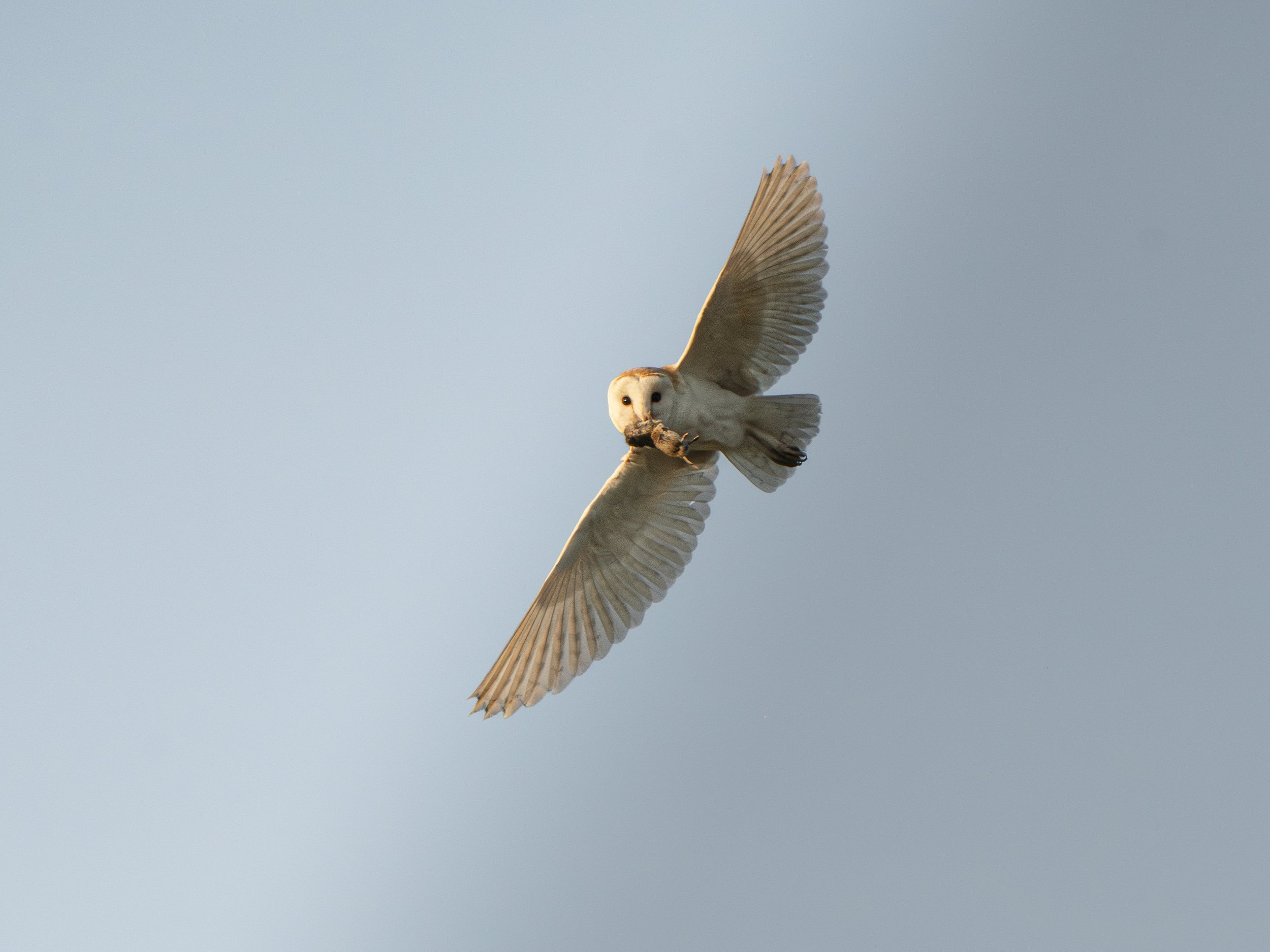How to find barn owls
Barn owls
Barn Owls are one of the most iconic animals we have in the UK, and arguably one of the most desirable species of bird for photographers to capture.
Unfortunately they’re elusive, both because of their nocturnal nature & their hunting style, being short, frequent flyers, staying low to the ground upon their silent wings.
If you want to find barn owls however there are a few things you can do to improve your chances and avoid spending too many hours out in the field with nothing to show for it.
finding barn owls in the field
I think the most important variable you can control when it comes to searching for barn owls is staying local. Make no mistake, finding barn owls on your local patch will take time, and when/if you find them, the amount of time you’ll spend doing everything right and still not seeing them will mean you’ll want to be as local as possible so your travel times are short and you can invest as much time as possible on site.
I can almost guarentee you’ll have barn owls somewhere close to you, and if you spend a bit of time searching and learning you’re local patch for sites that suit them, you will be successful in finding barn owls close to you.
So what do you need to Keep in mind when looking for barn owls.
The two main things you need to consider when looking for barn owls are;
Large open fields
Time of Day
Barn Owls are going to be most abundant in areas where food is also abundant, and for barn owls field voles and mice are a huge part of their diet. So when looking for barn owls it’s important to scout areas that are largely open fields with good surrounding boundaries such as hedgerows that will support these prey species.
Time of day is also incredibly important, but the time of day your local barn owls will be most active will loosely vary from barn owl to barn owl. Barn Owls are nocturnal birds, but they do hunt a little both at sunrise and sunset, my local owls are primarily evening birds and come peak season (June/July) they’re often out watching the sunset with me. Other spots will be different however, some locations will be better at sunrise and some will have owls who don’t come out at all until the sun has set.
If you’ve identified an area where you believe barn owls could be active in, then get out as often as you can, both at sunrise and at sunset and spend a the\ time learning your local owls habits.
If you’re a wildlife photographer than this is ideal as you can take advantage of the golden light and capture beautiful images and videos.
Patience & Perseverance
Personally i’ve spent more time then i’d care to admit watching barn owls & i’ve spent even more time staring at open fields with nothing to show for it.
You are going to spend a lot of time with limited success when looking for barn owls, but stick at it.
I’ve spoken before about the 95/5% split in wildlife photography.
95% of the time, you will see very little, or when you find what you’re looking for, the light won’t be right or you’ll have a setting wrong meaning you miss a moment, which is frustrating.
The 5% however, is magic. The 5% can only happen when the effort has been put in and the ground work walked. The 5% is when everything is paid off and you get to witness the most incredible moments in nature which will have you hooked.
to sum up
Finding Barn Owls is an incredible feeling, and getting to find barn owls on your local patch is one of the most rewarding experiences you can have.
Spend as much time as possible scouting your local area, open fields at sunset and sunrise, and don’t be dissuaded if you don’t see them. These wilder areas are home to so much incredible wildlife, you never know what you’re going to see when you’re out and about, but i can guarantee you won’t see anything if you’re not out looking!
Ethics
Barn Owls will always be a special species for me, however they are incredibly sensitive to disturbance and when we’re out photographing these birds, or any species of animal, we need to insure what we’re doing is ethical and not to the detriment of the species.
When watching these animals, remain quiet and try to stay as still as possible, watching and photographing natural behaviours will forever be better than forcing a situation through either bait or disturbance, keep your distance and don’t try and approach owls when they’re feeding or perched. I guarantee they’ll fly off and you won’t get close to the shot you were hoping for. Better to watch from a distance, observe and learn they’re behaviour and position yourself well in advance to take advantage of the time you put in.










